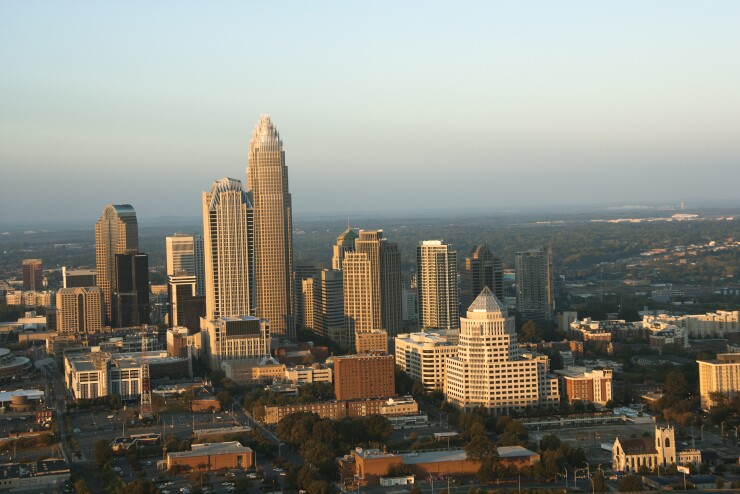At a recent economic forecast meeting, apartment developers reeled off some gloomy observations: Land prices and construction costs are shooting up, lenders are skittish, inventory is approaching record highs and rent growth is slowing down.
But the mood in the room? Still upbeat. Developers, operators and other people in the rental business are confident that Charlotte's boom isn't over yet, pointing to the city's strong population growth, as well as a growing economy and the continued shortage of available for-sale housing.
"It was the best of times, it was the worst of times," said Michael Cohen, director of advisory services at CoStar, deploying a literary allusion to describe the state of the apartment market. He spoke at the Greater Charlotte Apartment Association's annual look-ahead, held this year in a ballroom at the Westin hotel uptown.
The apartment boom in Charlotte, like much of the country, has been concentrated in expensive areas such as uptown, South End and SouthPark. The average rent in Charlotte jumped by almost 6% last year, according to the latest figures from Real Data, hitting $1,115 in August. But comparisons of rent at existing apartments, excluding new units, showed a 1.9% increase, down from 3.2% in 2016 and 4.3% in 2015.

"Without a doubt, the biggest thing is population growth," said Wyatt Dixon, a managing principal at Proffit Dixon, which is building upscale hotels in uptown and Ballantyne. The Charlotte region added about 25,000 jobs last year, and Mecklenburg County is expected to grow to about 1.4 million people by 2030, a nearly 40% increase.
All those new people mean a lot of new renters, which is what has kept vacancy rates low in Charlotte — around 6% or less — even as a record number of new apartments hit the market. But there's an expectation that rent growth will soon slow, especially as developers finish thousands of new high-end apartments over the next few years.
"We're facing some headwinds," said Dixon. "I think we're going to have to hit pause and wait for this to get absorbed before we see new development in a major way."
One issue: The concentration of building for renters who can pay top dollar. Cohen said developers have been focused on the roughly one-third of the market with household incomes of $75,000 or more. About 80% of all new apartments under construction in the U.S. would require that income level, putting them out of reach for many renters.
"There has been a herd mentality," said Cohen. "It's all urban submarkets...More than half the units underway right now are in the most expensive submarkets."
Dixon also pointed to rapidly rising construction costs, driven by higher land prices, a scarcity of workers and more expensive materials.
Some of the increases are eye-popping.
Dixon said that in 2007, a "midrise wrap" apartment building (the four- or five-story wood-framed building common in Charlotte) costs an average of $150,000 a unit to build. Last year, those averaged $232,000 a unit to build — a 55% jump in 10 years. That translates to higher rents developers have to charge to pay off the debt incurred on new buildings.
"It's harder to make (deals) work," said Dixon. While he said developers can still get loans, skittish lenders are vetting plans more thoroughly. "They're paying a lot more attention."
But for now, even if growth slows, experts don't expect a crash. Wells Fargo economist Mark Vitner said Charlotte had the 10th-fastest GDP growth in the U.S. last year, and the bank is forecasting the national economy will grow by 3% this year.
"We're pretty optimistic," Vitner said. "Charlotte continues to see strong population growth."





